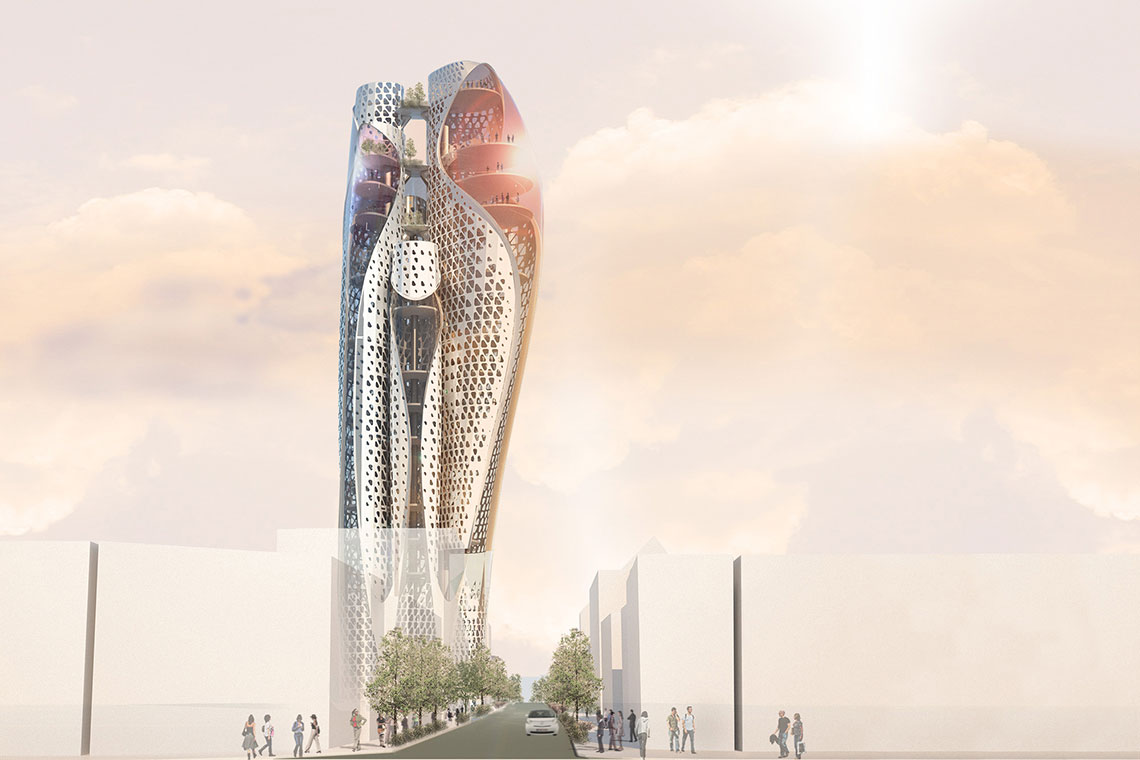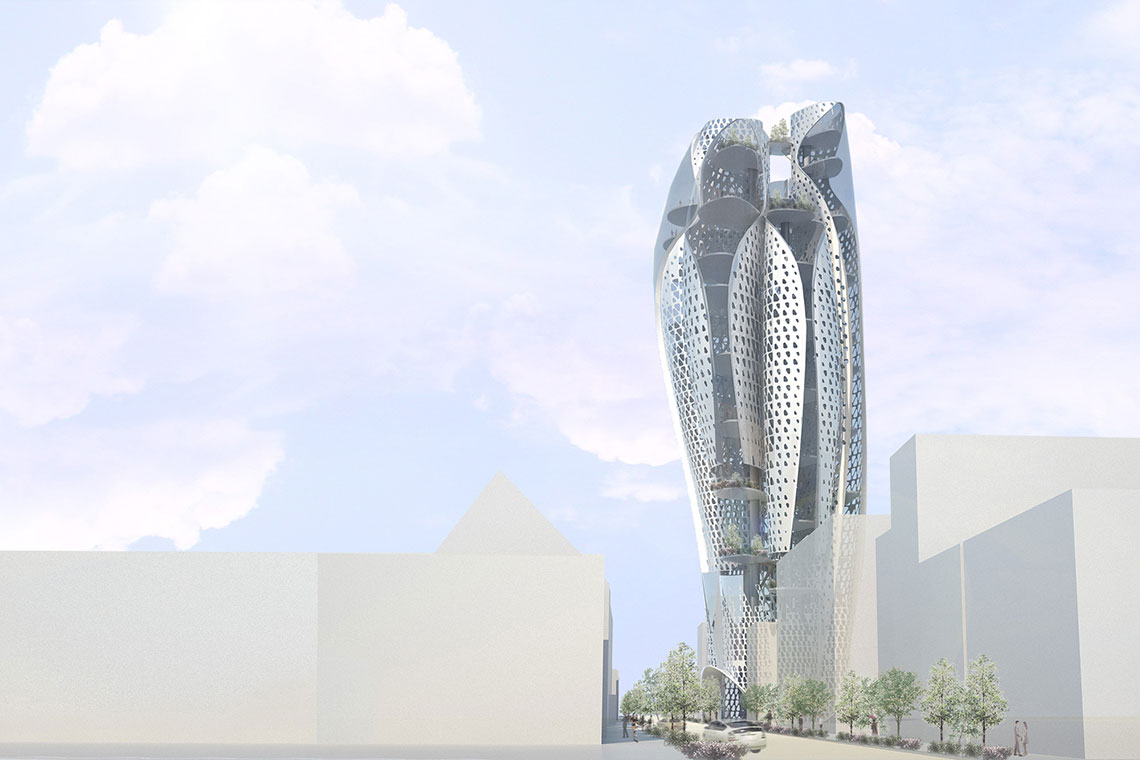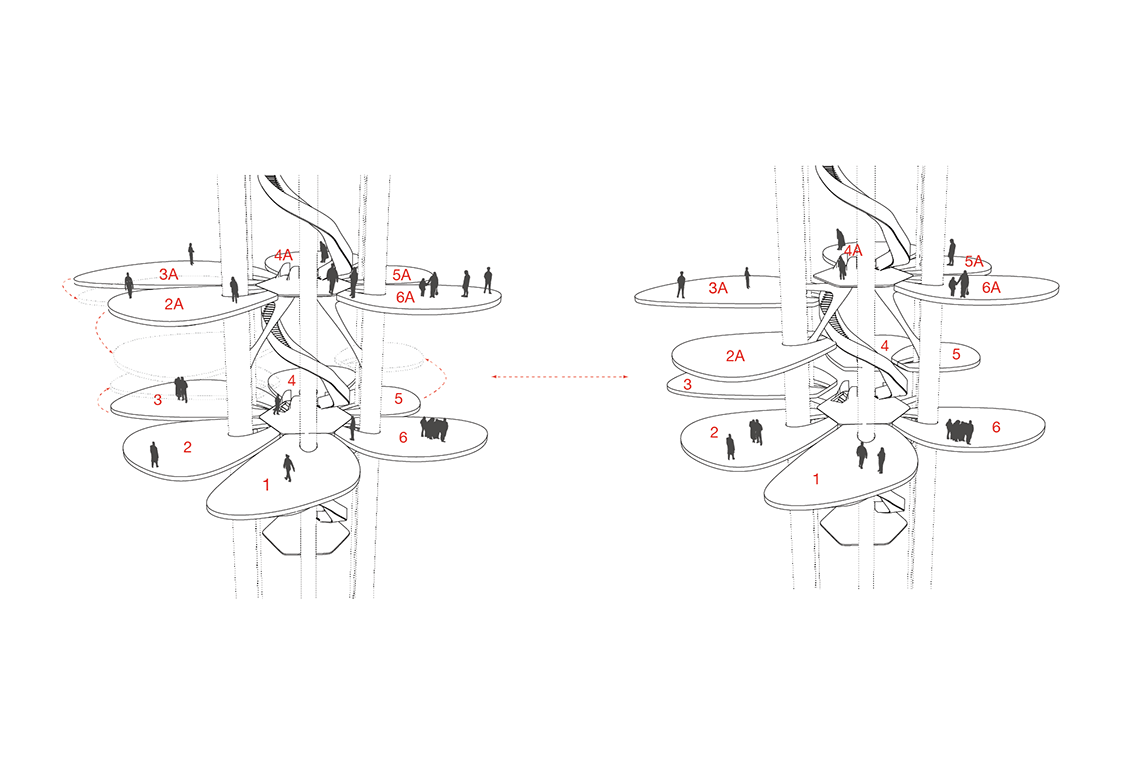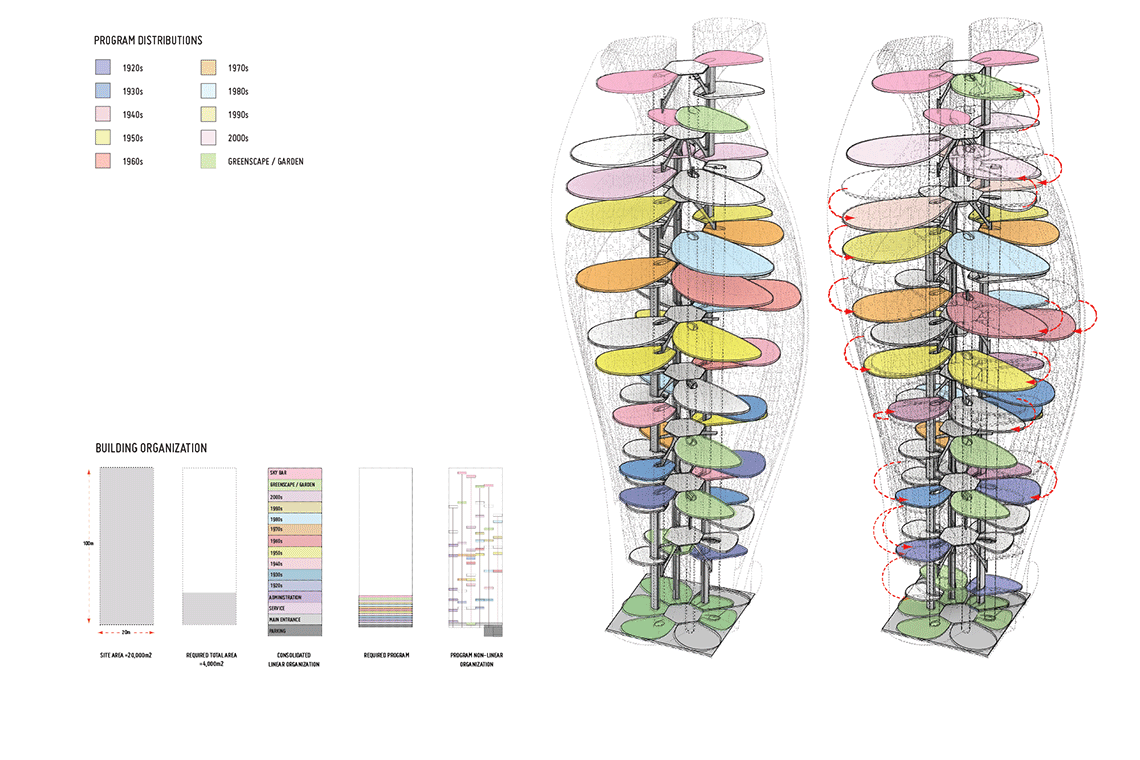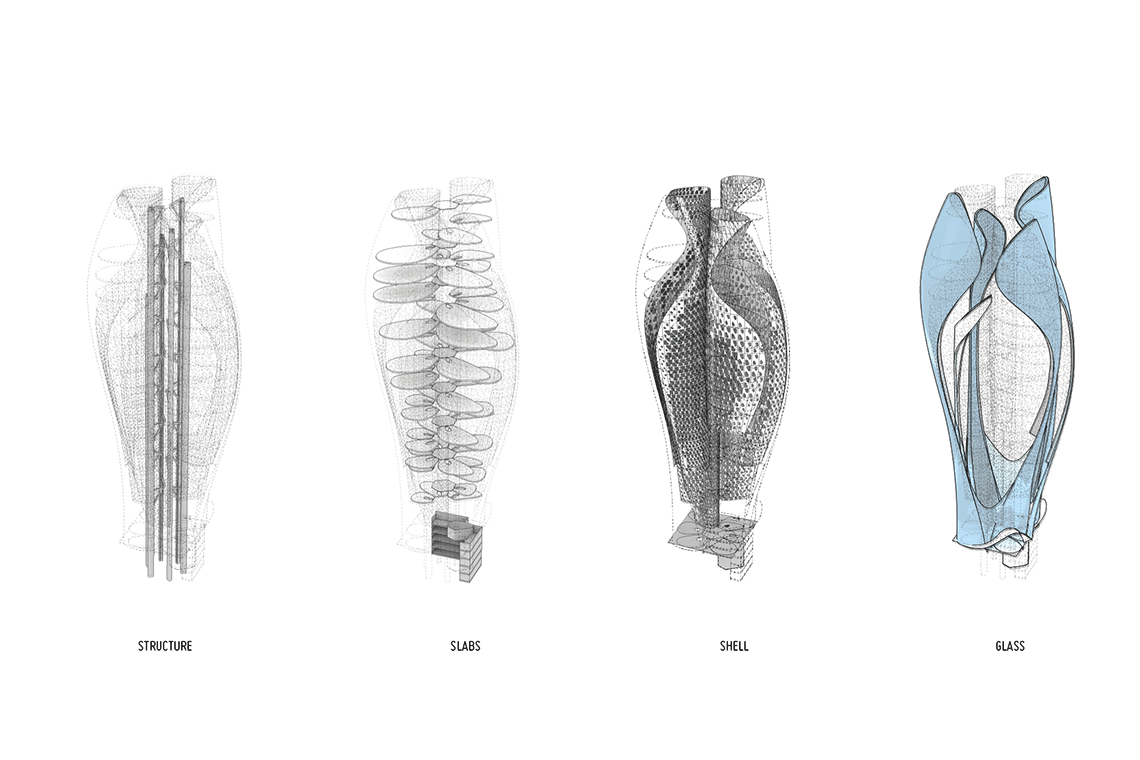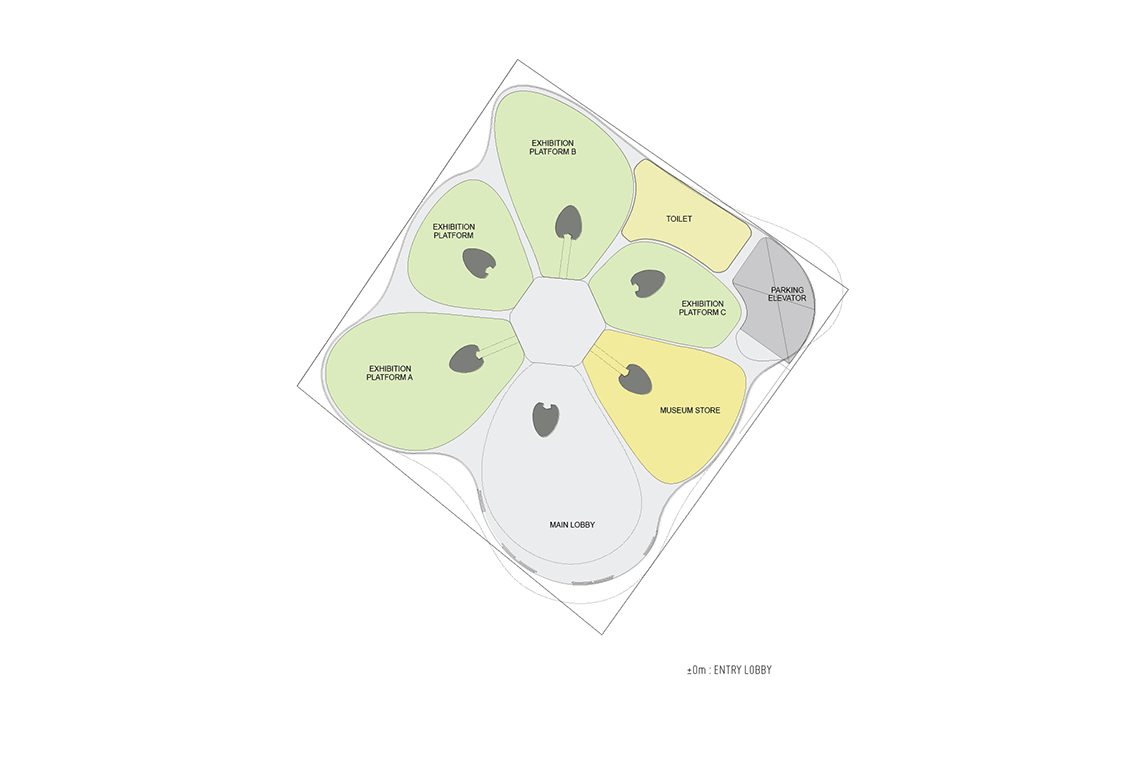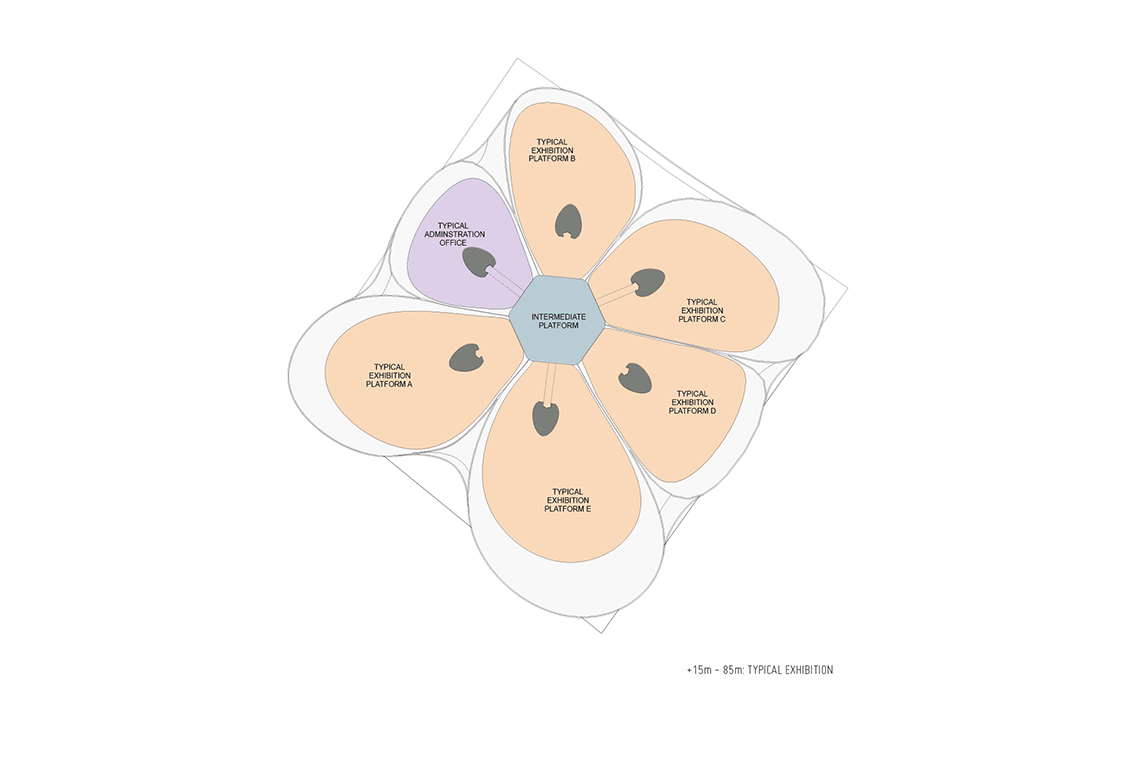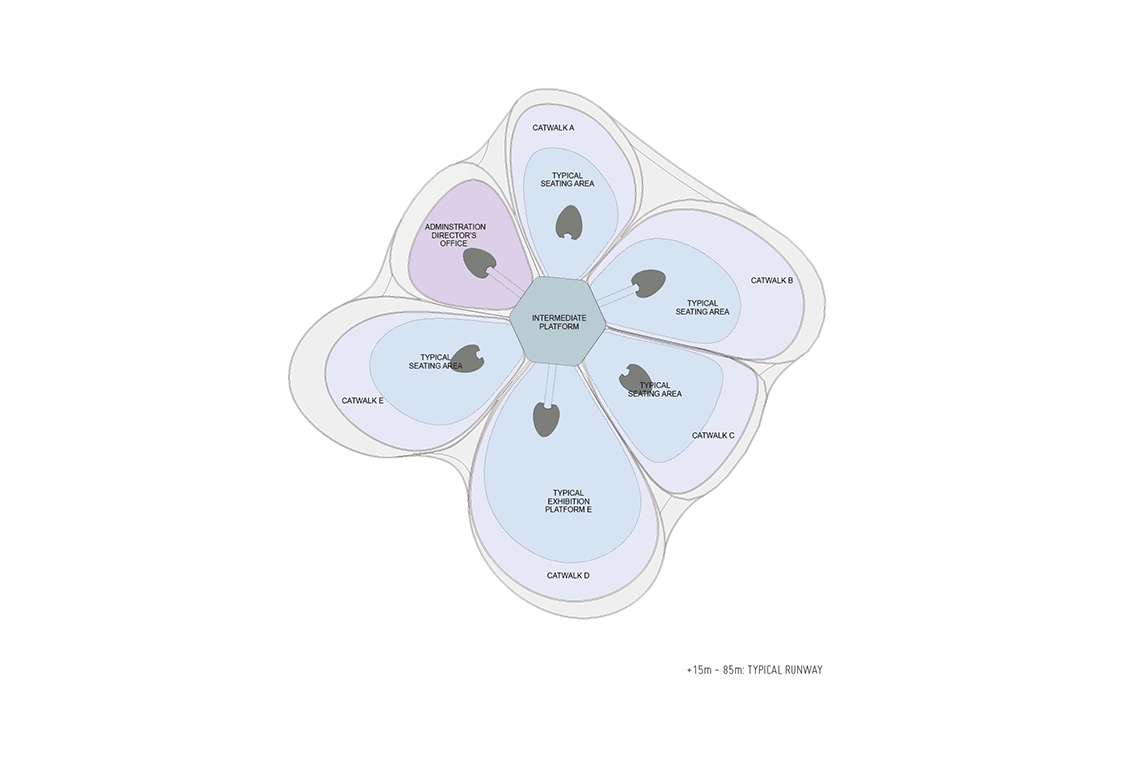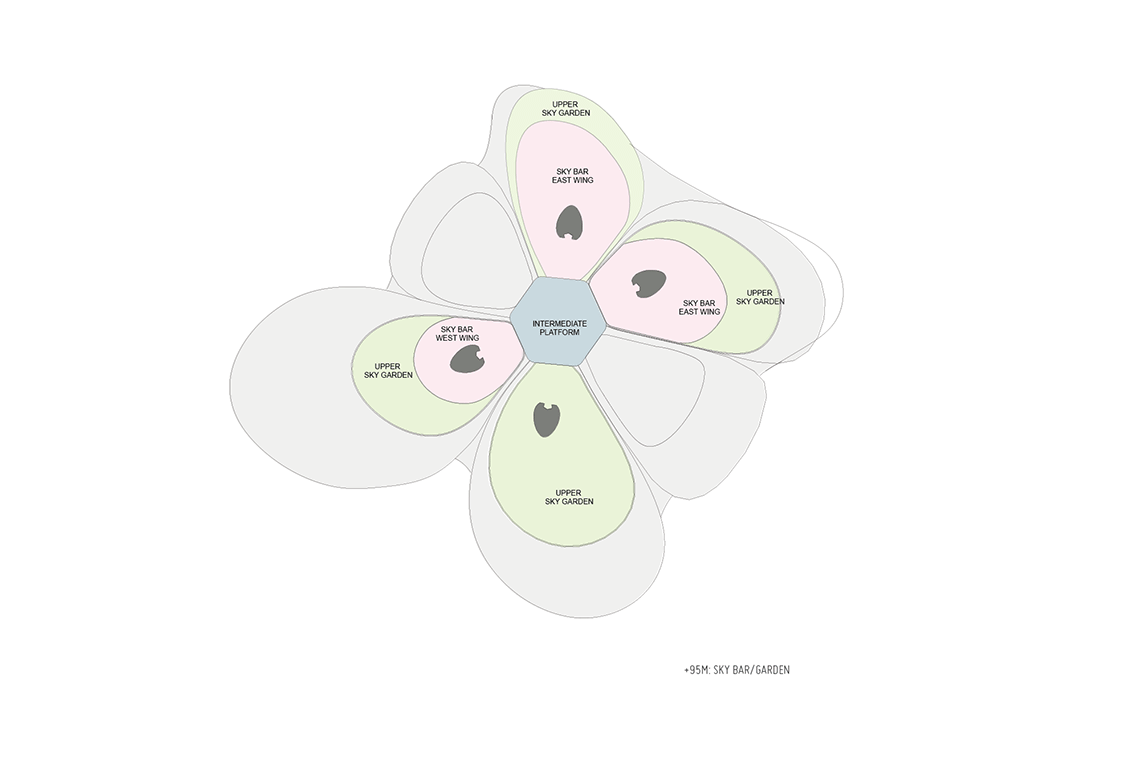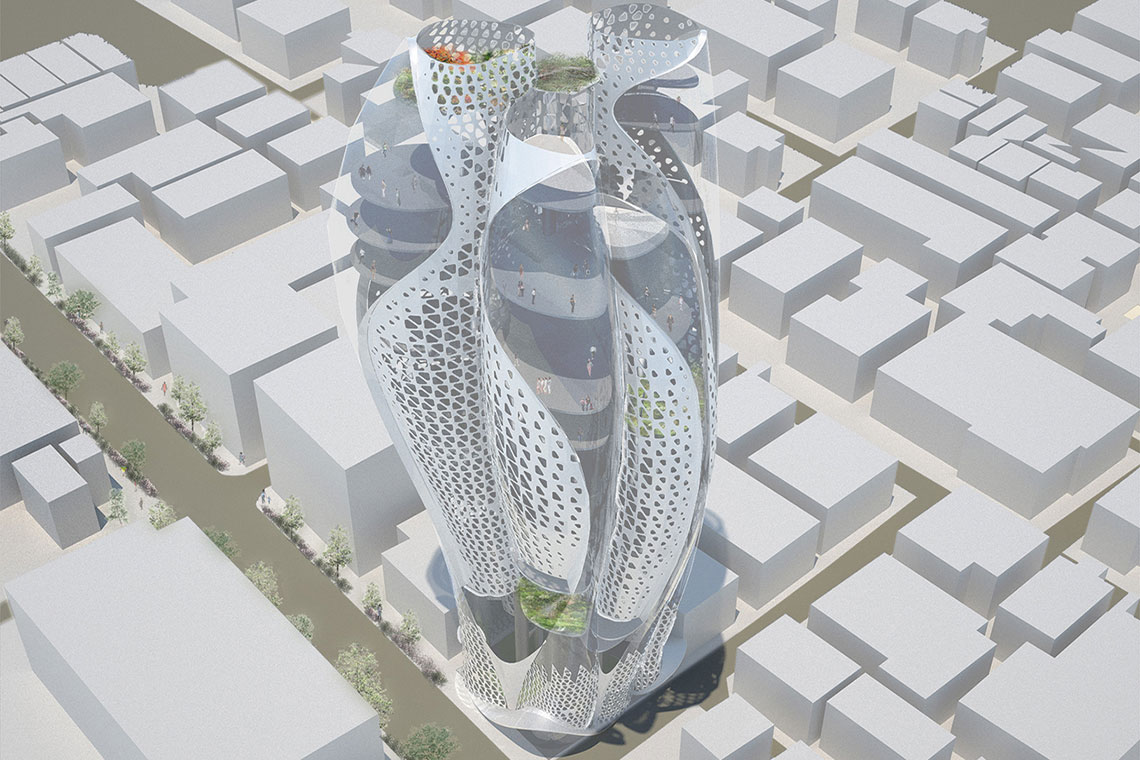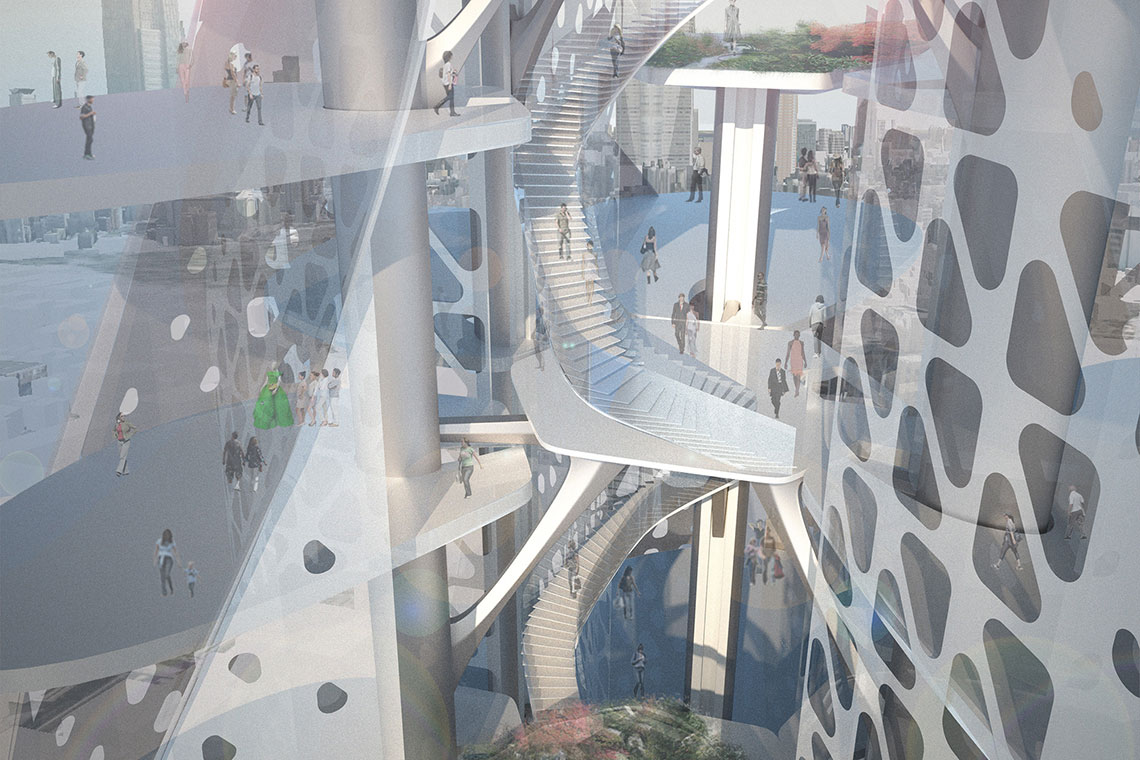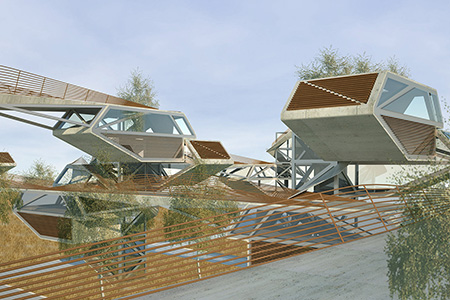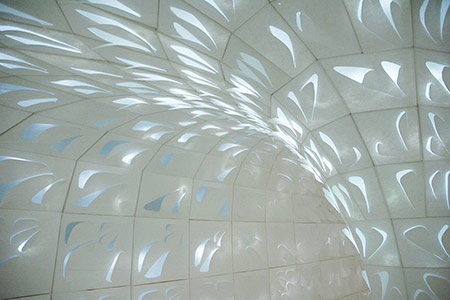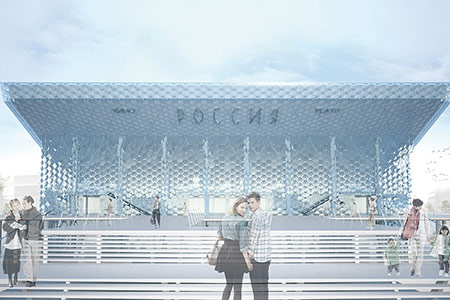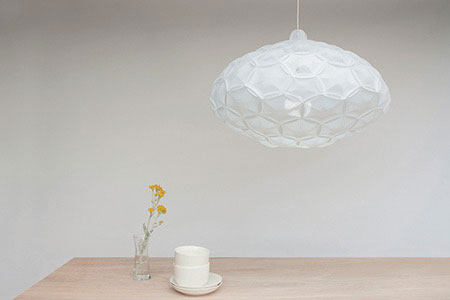Static Shuffle
Ethereal visualizations that fashion world projects to our eyes every season are full of elaborated glamour. A complex enough human body is transformed into even more complex vessel system with an invented dress and accessories. Fashion intoxicates our perception by transforming our vessel externally and internally, changing the persona of a wearer into any character we desire. The desire of transformation lives within each of us; we transform our bodies, our houses, our cities, and our world.
Tokyo is known around the world as the city in a constant flux with emergence of innovative buildings and public amenities while preserving its traditional heritage and culture. Only in this city culture can such adaptation occur, transforming its cityscape in many levels. Various contrasting scales in this cityscape have transformed the way each person chooses to engage Tokyo.
Fashion Museum in Omotesando is a unique space for engaging with the city, the building and fashion. Unlike typical museum that structures its exhibitions in a static environment where the users circulated within in a linear way, Fashion Museum reverses that notion, where it allows the exhibitions and the users to circulate and interact with each other. This dynamic structure of Fashion Museum allows infinite possibilities of navigating the space in a non-linear format. While the museum also can allow a typical linear organization to understand the history of fashion in chronological order, the unique building feature of mobile platforms allows for various adjacencies of exhibition spaces. This way, one exhibition floor can contain, as an example, artifacts from 50s, 70s, 90s and 2010s. Even though the content of exhibition may not change in each platform space, the vertical motions of platforms bring a new concept of exhibition where each visitor will have a unique confrontation of fashion history.


